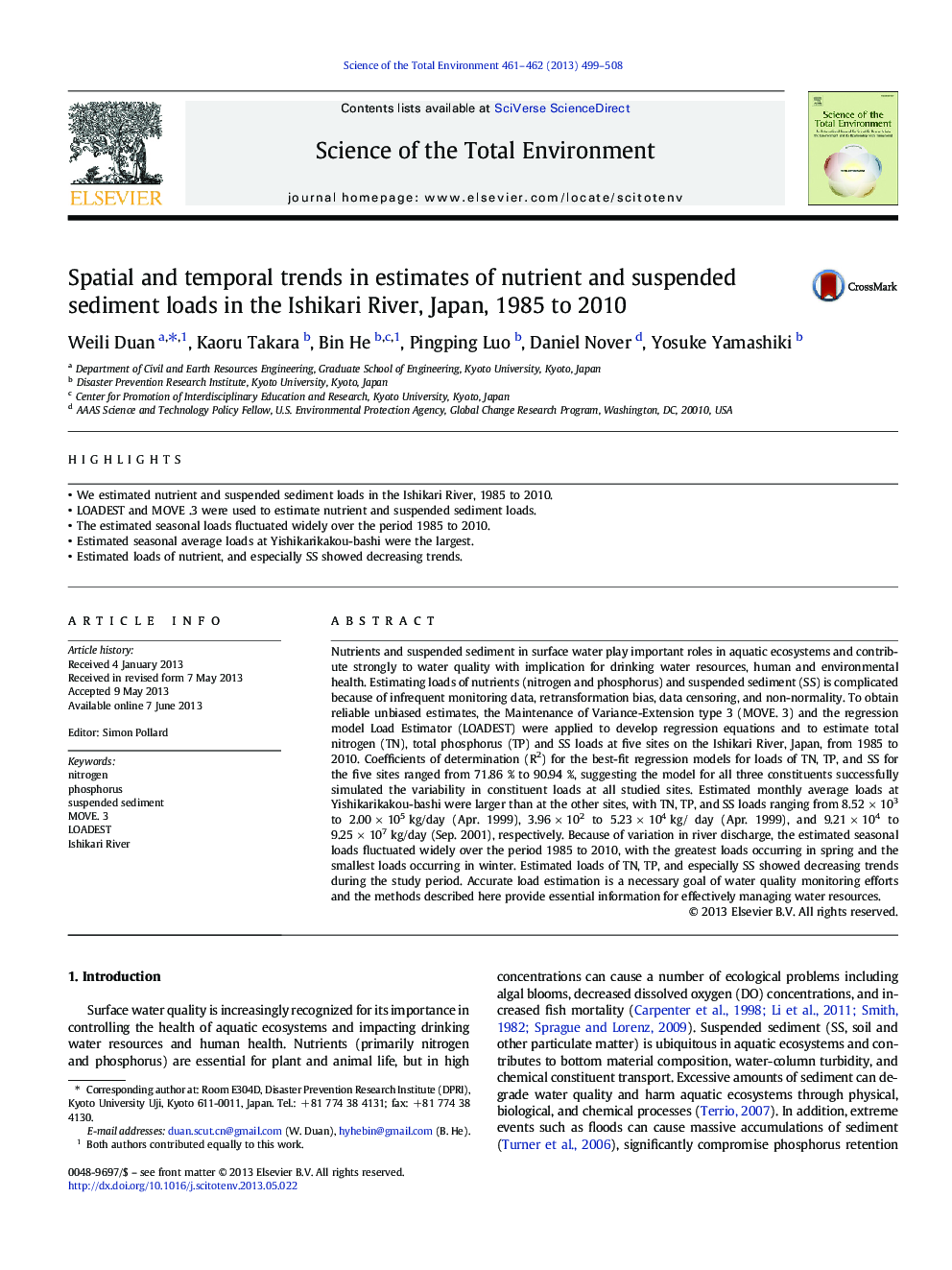| Article ID | Journal | Published Year | Pages | File Type |
|---|---|---|---|---|
| 6331981 | Science of The Total Environment | 2013 | 10 Pages |
â¢We estimated nutrient and suspended sediment loads in the Ishikari River, 1985 to 2010.â¢LOADEST and MOVE .3 were used to estimate nutrient and suspended sediment loads.â¢The estimated seasonal loads fluctuated widely over the period 1985 to 2010.â¢Estimated seasonal average loads at Yishikarikakou-bashi were the largest.â¢Estimated loads of nutrient, and especially SS showed decreasing trends.
Nutrients and suspended sediment in surface water play important roles in aquatic ecosystems and contribute strongly to water quality with implication for drinking water resources, human and environmental health. Estimating loads of nutrients (nitrogen and phosphorus) and suspended sediment (SS) is complicated because of infrequent monitoring data, retransformation bias, data censoring, and non-normality. To obtain reliable unbiased estimates, the Maintenance of Variance-Extension type 3 (MOVE. 3) and the regression model Load Estimator (LOADEST) were applied to develop regression equations and to estimate total nitrogen (TN), total phosphorus (TP) and SS loads at five sites on the Ishikari River, Japan, from 1985 to 2010. Coefficients of determination (R2) for the best-fit regression models for loads of TN, TP, and SS for the five sites ranged from 71.86 % to 90.94 %, suggesting the model for all three constituents successfully simulated the variability in constituent loads at all studied sites. Estimated monthly average loads at Yishikarikakou-bashi were larger than at the other sites, with TN, TP, and SS loads ranging from 8.52Â ÃÂ 103 to 2.00Â ÃÂ 105Â kg/day (Apr. 1999), 3.96Â ÃÂ 102 to 5.23Â ÃÂ 104Â kg/ day (Apr. 1999), and 9.21Â ÃÂ 104 to 9.25Â ÃÂ 107Â kg/day (Sep. 2001), respectively. Because of variation in river discharge, the estimated seasonal loads fluctuated widely over the period 1985 to 2010, with the greatest loads occurring in spring and the smallest loads occurring in winter. Estimated loads of TN, TP, and especially SS showed decreasing trends during the study period. Accurate load estimation is a necessary goal of water quality monitoring efforts and the methods described here provide essential information for effectively managing water resources.
